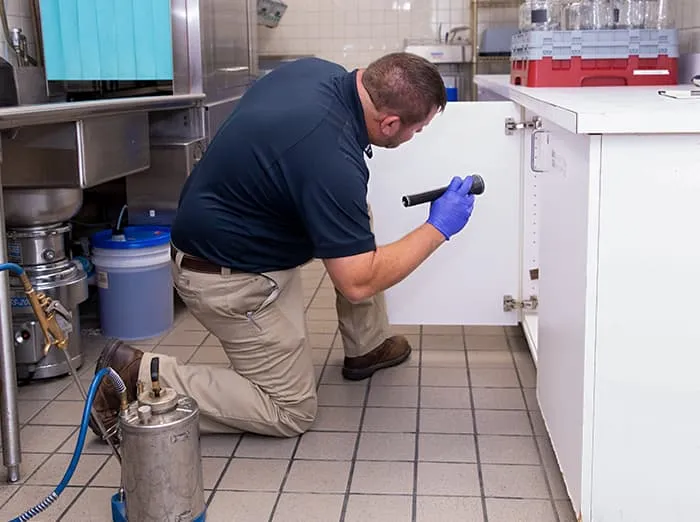Ants, rodents, and spiders come out hungry and ready to spread once the spring season starts. They won’t stop at anything as they look to exploit every vulnerability in homes that they can find. They will nest, feed, and multiply with no regard for anything else but themselves.
Without taking proactive measures, minor cracks and damp corners can evolve into financially costly infestations.
This is where regular pest control inspections during spring come in. They act as a critical safeguard, allowing professionals to spot risks before they escalate.

Why Spring Demands Extra Vigilance
Warmer temperatures and spring rains create a pest paradise. Ants forage for wood, and rodents emerge from their winter shelters as they seek new nesting sites. This bustle of life also attracts wildlife, some of which are fresh from a hibernative state. The moisture from winter melt softens the wood, too, making it easier for certain pests to break, while the standing water in clogged gutters easily becomes mosquito breeding grounds.
These factors make inspections important. Delaying them only allows these populations to establish themselves, turning what could’ve been a manageable issue into a full-blown crisis.
How Professional Inspections Target Pests and Wildlife
Inspections focus on the specific pests and wildlife threatening homes. Here’s what a thorough evaluation covers:
1. Entry Point Identification for Rodents and Wildlife
Technicians examine foundations, roofs, and utility lines for gaps larger than ¼ inch—enough for mice or squirrels to squeeze through. Solutions include sealing cracks with steel wool, installing vent covers, and reinforcing attic access points.
2. Moisture and Food Source Assessments
Damp basements or leaky pipes attract ants and cockroaches. Inspections flag moisture hotspots and recommend fixes like dehumidifiers or pipe repairs. Professionals also identify unsecured trash cans or pet food that lure raccoons and rodents.
3. Nesting Site Detection
Attics, crawl spaces, and wall voids are checked for rodent nests (shredded insulation, droppings) or wildlife dens (raccoon latrines, squirrel-stored acorns).
4. Landscaping and Outdoor Evaluations
Overgrown shrubs or tree branches near roofs provide wildlife access. Inspections recommend trimming vegetation and securing compost bins to deter pests.
5. Wildlife Exclusion Strategies
For raccoons or squirrels, professionals use humane wildlife exclusion methods like one-way doors paired with habitat modifications (e.g., sealing den sites after eviction).
Long-Term Benefits of Spring Pest Inspections
Prevent Property Damage
Rodent-chewed wires or raccoon-torn insulation cost thousands to repair. Early detection avoids structural harm.
Protect Health
Rodent droppings spread hantavirus, while cockroach allergens trigger asthma. Inspections reduce these risks.
Deter Wildlife Humanely
Professionals evict raccoons and squirrels without harm, sealing entry points to prevent re-entry.
Maintain Home Value
Undetected pest damage lowers resale value. Inspection reports prove your home remains pest-free.
What Happens During a Spring Inspection?
Interior Checks
Technicians inspect basements, attics, and kitchens for droppings, gnaw marks, or ant trails. They check under sinks for leaks and inside cabinets for food residue attracting pests.
Exterior Evaluation
Foundations, roofs, and landscaping are scrutinized. Technicians note gaps in siding, damaged soffits, or unsecured trash bins.
Post-Inspection Report
Homeowners receive a detailed action plan, such as sealing gaps, trimming tree limbs, or installing chimney caps. Follow-ups may include monitoring traps or seasonal re-inspections.
Stop Putting Your Home at Risk of Pests
Homeowners often overlook subtle signs. A faint rustling in walls might seem harmless but could indicate rodents. Displaced attic insulation might signal squirrels. Professionals combine training with technology to spot these clues, offering solutions beyond store-bought traps.
By combining advanced tools, structural assessments, and humane wildlife strategies, pest control experts provide eco-conscious pest prevention and security beyond the season.







